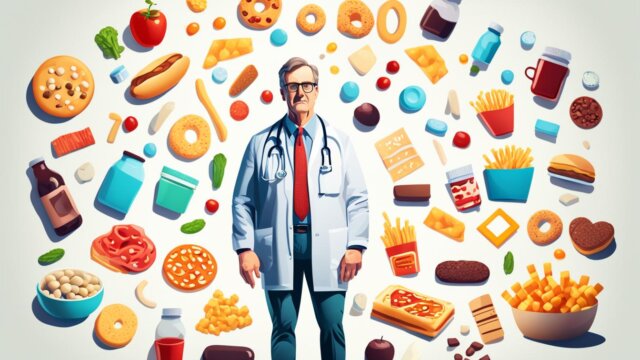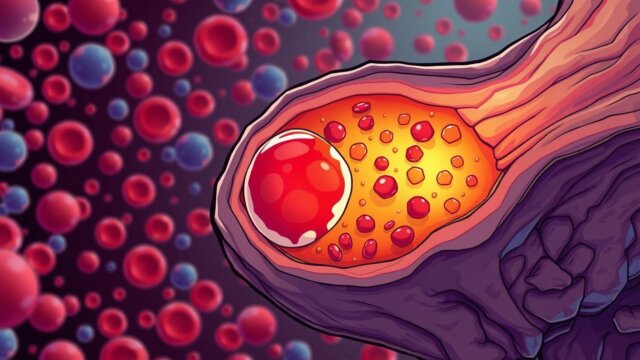FTC disclaimer: This post may contains affiliate links and we will be compensated if you click on a link and make a purchase.
You would have heard somehow that processed food is unhealthy.
You don’t know what processed food means and how it has contributed to the rise of chronic diseases like heart disease and diabetes and epidemic diseases like obesity.
Some identify processed food as too many ingredients or the addition of artificial colors, flavors, and chemical additives.
Moreover, processed food is also referred to as convenience or pre-prepared food.
The definition of processed foods is dependent on the source and how it has been processed.
What are processed foods?

According to USDA (The U.S Department of Agriculture), processed foods are one that has changed from their natural state.
So, any raw agricultural commodity has undergone any changes such as cleaning, milling, cutting, chopping, heating, pasteurizing, blanching, cooking, freezing, canning, dehydrating, drying, mixing, packaging or any other procedures are processed.
Moreover, processed foods also include any preservatives, flavors, food additives, or substances such as salt, sugar, and fats and any additional nutrients.
Additionally, according to the Institute of Food Technologists, processed foods also include when it is termed as storing, fermenting, filtering, extracting, concentrating, packaging, and microwaving.
So, if we go according to these standards, all food sold in the supermarket is somehow processed. Because when we harvest anything, it starts to deteriorate and lose nutrients.
Then, it is necessary to understand the various degrees of food processing.
To understand more clearly, the American Academy of Nutrition and Dietetics has classified food processing under three heads:
- Unprocessed or minimally processed foods
- Processed foods
- Ultra-processed foods or highly processed foods
What is Unprocessed or minimally processed food?

Unprocessed foods are those foods that we eat in a natural state, such as fruits, vegetables, nuts, seeds, and whole grains.
Minimally processed foods are those foods that have undergone refrigeration, grinding, freezing, fermentation, milling, pressing, pasteurization, and vacuum-packaged.
The example includes:
- Pasteurized milk
- Refrigeration or freezing of fruit and vegetables
- Cutting, chopping, and vacuum-packed fruits, vegetables, meat
- Grinding of whole grains to flour
- Extraction of oil by pressing and refining plants and seeds
What is processed food?

Processed foods are preserved for a longer time by adding additional ingredients like salt, sugar, and fats.
The processed food example includes canned fruits and vegetables, homemade cheeses, freshly homemade bread, canned fish, etc.
These processed foods are also stored or prepared by adding one or two ingredients that make them ready to eat.
What is Ultra-processed food?

Ultra-processed foods are those foods that are ready-to-eat and has undergone significant food processing. These foods include multiple ingredients combined with additives or some “industrial formulation” to make them tasty and addictive.
Ultra-processed foods include fried snacks, confectionery, processed meat, cakes, biscuits, and cereals.
These ultra-processed foods also include artificial colors and flavors, a preservative to self-stability, preserve texture, and increase palatability.
Also, these ultra-processed foods are typically ready-to-eat anytime, and some require very minimal additional preparation.
Moreover, these highly processed foods contain significantly less fiber and nutrients.
Some of these highly processed foods include:
- Sugary drinks
- Chips, cookies, and crackers
- Processed meat
- Frozen dinners and luncheons, meats
What is the advantage of minimally processed foods?
No doubt, minimally processed foods can save lots of your time, but they can also retain some of the essential nutrients like protein and Vitamin C.
Let’s look at some of the significant advantages of minimally processed foods.
- A minimally processed method such as pasteurization, cooking, and drying inhibit or destroy harmful bacteria’s growth.
- During minimally processing, foods may lose B vitamins and iron, but they are retained by fortifying. Also, food fortified with specific nutrients has helped and prevented health-related problems and deficiencies.
- Milk fortified with vitamin D has been prevented from rickets.
- Wheat flour fortified with folic acid has also prevented birth-related defects.
- Fortification of iodine in salt has prevented goiter.
- Minimally processing, such as the addition of emulsifiers, has preserved the texture of foods. The addition of emulsifiers in peanut butter, cheese has prevented it from separating into solid and liquid parts.
- Refrigeration of food has delayed the spoilage of food and preserves the desirable sensory quality of foods such as flavor, aroma, texture, and appearance.
What is the disadvantage of minimally processed foods?
Minimally processed foods have certain disadvantages that cannot be ignored.
- Some minimally processed foods can destroy most of the nutrients, such as peeling off the outer layers of fruits, vegetables, and grains. Peeling removes some of the plant nutrients such as phytonutrients and fiber.
- Heating and drying can also destroy specific vitamins and minerals. Although, you can add some of the nutrients which are lost during processing. But, it is impossible to recreate food nutrients in their original form. So, fortification may help, but it is not the replacement of the original form.
What is an excellent alternative to processed foods?

We have listed some good alternatives to processed foods that are healthy and retain vitamins and minerals.
- Canned fruits that are packed in water or their own juice
- The Canned fish such as salmon and tuna in spring water or olive oil
- Canned vegetables in water
- Pre-cut and pre-washed vegetables
- Grass-fed organic cheese
- Grass-fed organic butter
- Frozen peas
- Natural yogurt
- Grass-fed, organic, and unprocessed meat
- Roasted peanut
- Extra virgin olive oil
Why should you avoid ultra-processed foods?

Ultra-processed foods or highly processed foods have an adverse effect on health when consuming them for the long-term.
Highly processed foods contain an unevenly high ratio of calories to nutrients, which is considered unhealthy and gives rise to obesity, heart disease, and diabetes.
According to the National Institutes of Health Study, people eating highly processed foods consume more calories and gain more weight.
In a study, it was revealed that highly processed foods had changed people’s eating behavior.
Another finding has evaluated the association of ultra-processed foods with mortality rates.
Furthermore, the results have shown that the higher consumption of ultra-processed food has increased the risk of all sorts of mortality by 62%.
Additionally, the daily serving of highly processed foods has increased the mortality rate by 18%.
What should I look at the label of highly processed foods?
You should be aware of specific ingredients to identify and differentiate whether processed or highly processed foods.
Some ingredients may be misleading and dangerous for people suffering from allergies or intolerance, digestive issues, and diabetes.
The ingredients list is longer.
The foods are highly processed when you find longer ingredients list.
However, if the ingredients are not recognizable or contain a long chemical name, the products are definitely unhealthy.
Understand the added ingredients quantity.
The ingredients are added to foods in order of quantity by weights. It means that most weigh ingredients are listed first, and least weighs ingredients are listed last.
Ingredient in the form of sugar or hidden sugar
You should also look for ingredients, which is in the form of sugar, that can destroy your health and lead to chronic diseases such as diabetes and heart diseases. These ingredients are:
- Corn syrup
- High-fructose corn syrup
- Honey
- Agave nectar
- Cane sugar
- Evaporated cane sugar
- Coconut sugar
- Dextrose
- Malt syrup
- Molasses
- Turbinado sugar
Hidden Sodium or salt
It would help if you also looked for sodium-rich, highly processed foods. Besides, the other form of Sodium is monosodium glutamate and disodium phosphate.
Look for Food additives.

Food additives are added to packed foods to maintain flavors and taste.
Some of the common food additives are preservatives, artificial colors, and flavoring agents.
Moreover, some preservatives prevent the growth of mold and bacteria, and others may help prevent or develop spoilage flavors.
- Preservatives: ascorbic acid, sodium benzoate, potassium sorbate, and tocopherols. These ingredients increase cell life.
- Emulsifiers: soy lecithin, monoglycerides. These ingredients prevent the separation of solid and liquid.
- Thickeners: xanthan gum, pectin, carrageenan, guar gum. These ingredients maintain food texture.
- Artificial colors: artificial FD&C Yellow no. 6, natural beta-carotene
Fortified Ingredients

Some processed foods are fortified to maintain the required amount of vitamins and minerals. During processing, most of the vitamins and minerals are destroyed.
- B vitamins (riboflavin, niacin, niacinamide, folate or folic acid)
- Beta carotene
- Iron (ferrous sulfate)
- Vitamin C (ascorbic acid)
- Vitamin D
- Amino acids to boost protein content (L-tryptophan, L-lysine, L-leucine, L-methionine)
Highly processed foods contain added sugar, saturated fats, and Sodium that may alter your health and gives rise to diseases like obesity, heart disease, diabetes, and high blood pressure.
Whether processed or highly processed foods, you can quickly identify it by looking into the food ingredients.
The research has concluded that highly processed foods contain 90% of the calories from the added sugars.
Bottom Line
We have gone through different ranges of food processing, from milling or freezing to the addition of preservatives and artificial colors.
As a general rule, your daily diet should emphasize more on unprocessed or minimally processed foods.
Processed foods have different pros and cons to consider. In contrast, highly processed foods are linked to poor health outcomes and lead to many diseases.
Highly processed foods contain a high amount of sugar, excess sodium, and unhealthy fats.
It is always good to look for ingredients and labels that define the label of processing and whether it is good to consume or not.








